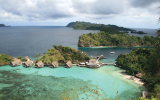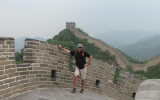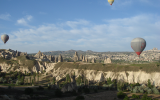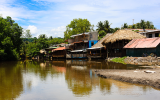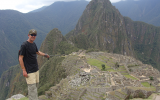- Magazine
- #readityourway
- Weekly Stories
- #shareyourstory
-
Adventure
- Abroad Travelling
- Africa Travelling
- Events
- Expos & Shows
- Festivals
- Fishing
- Free Diving
- Gliding
- Horse Riding
- Inspiring People
- Islands Travelling
- Kite/Windsurfing
- Motorbiking
- Motorised Water Sports
- Mountaineering
- Mountain Biking
- Off-road 4x4
- Off-road Motorbiking
- Paddling
- Performance Driving
- Photography
- Rock Climbing
- Rollerblading
- Sailing
- Scuba Diving
- Skateboarding
- Skydiving
- Snowboarding & Skiing
- Surfing
- Swimming
- Trail Running
- Wakeboarding
- Waveski Surfing
-
Sport
- Adventure Racing
- Fishing
- Free Diving
- Gliding
- Health & Fitness
- Horse Riding
- Inspiring People
- Kite/Windsurfing
- MMA
- Motorbiking
- Mountain Biking
- Multi-sport
- Off-road 4x4
- Off-road Motorbiking
- Paddling
- Performance Driving
- Photography
- Road Cycling
- Road Running
- Rock Climbing
- Rollerblading
- Sailing
- Scuba Diving
- Skateboarding
- Skydiving
- Snowboarding & Skiing
- Surfing
- Swimming
- Rugby
- Trail Running
- Triathlon
- Wakeboarding
- Waveski Surfing
- Lifestyle
- Calendar
Around the World on Public Transport - South America to the Sub Continent of India
Words & Photos by Phillip-Neil Albertyn
Topic:
Abroad Travelling
The idea of travelling around the world became a reality after a few good bottles of wine at a braai with some of my buddies. The rules for this epic adventure was to travel across five continents from coast to coast, between the 2008 and 2012 Olympics, and only by public transport. In the last issue, my travels took me from Europe, to Northern and Central America. South America was up next, and with my new-found Spanish language skills I was keen to apply them in this magnificent continent, with its vast deserts and jungles, high mountains, large rivers, and ancient cultures. From there I would go to India, a place that I'd heard so many contradicting reports about that I had to go and experience it for myself.
South America
I flew to Cartagena from Panama as the 'Trans Am' highway literally stops in a jungle, which is run by drug lords. This old city is surrounded by walls and prides itself on being the biggest fort in the whole of South America. After an incident with a guy bearing a knife, who wanted to relieve me of all my worldly possessions, I decided it was time to head towards the Andes, the longest continental mountain range in the world. Leaving by local bus, I passed the capital and largest city of Columbia, Bogota, as well as a few smaller towns on the way to Ecuador, just outside Quito on the equator. This is a beautiful colonial city with wonderful views of the Andes' snow-capped peaks and a nearby volcano.
Arriving in Peru, I had a rather eventful first day as I was stung by a poisonous fish and had to be rushed to hospital by a 'tuk-tuk'. After a few injections and some TLC I was ready to tackle the longest single trip (40 hours) to Cusco, via Lima, and home of the Inca Trail; a trail that's rated by many to be in the top five treks in the world. I met four other travellers here and we decided to do this together instead of using an agency. In just 43 km, the trail manages to combine beautiful mountain scenery, lush cloud forest, subtropical jungle, and a stunning mix of Inca paving stones, ruins and tunnels. After four days of hiking we reached the trail's final destination; Manchu Picchu, the mysterious 'Lost City of the Incas', and this experience counts as an all time high for me.
I then took a battered old truck to Lake Titicaca, the world's highest navigable lake, and this was another gem with so much on offer. The drifting islands close to Puno and the Isla de Sol's beautiful sunsets over the lake and snow-capped mountains were all highlights for me.
Reaching Bolivia in a brightly coloured chicken bus (used to transport almost anything), this country is the uncut diamond of South America. Although it was the most rural of the countries I travelled through, I spent some unforgettable time there sharing the water with freshwater dolphins, and piranhas and alligators in the upstream arteries of the Amazon. A trip to La Paz and Potosi, the highest capital and city in the world, was a tough one for me as I battled with the thin air.
Leaving Potosi I travelled by 4x4 to reach Uyuni Salt Lake, considered to be one of the seven natural marvels of the world. Located 3,650 m up in the mountains of Bolivia, it covers an area of 12,000 km square and is the biggest salt lake in the world. Here you will also find the Salt Hotel that's located right in the middle of the lake! This hotel is built out of blocks of salt cut from the lake, and all the furniture is also made of salt blocks. The only things made of contemporary materials are the toilets, lighting, and billiard table.
With my Spanish still under construction, I bought a train ticket to Chile, or so I thought. Midway through the trip I realised that the train was not heading for the Chilean border, but rather the Argentinean border. With this new destination thrust upon me, I headed towards Mendoza in a minibus and was treated to some of the most spectacular rock formations near Salta, and passed many vineyards that are responsible for some of the finest wines in South America. Mendoza is a vibrant place and definitely shares some of the flair of her sister city Stellenbosch in South Africa.
From Mendoza, I set my sights once again on Chile and boarded another train - the right one this time. To cross into Chile one has to travel over the Andes, where you are surrounded by towering and breathtaking peaks of well over 6,000 m. Entering the country’s capital, Santiago, the city was surprisingly modern and complete with a underground train system. After a little mishap where the first train left with my backpack and not me, I managed to recover my bag and left Chillán three hours later. Earthquakes have battered Chillán throughout its turbulent history, so most of its colonial charm was bulldozed away decades ago. But away from the sweeping concrete shopping precincts of the city centre, it does have its appeal and the landscape is dotted with glassy lakes and flowing rivers, and surrounded by mountains.
I re-entered Argentina and headed to the most southern-most city on this adventure, the fairy-tale city of San Carlos de Bariloche. It is perfectly situated between glacial-carved mountains and vibrant forests that surround the lake, and boasts the most beautiful wooden and stone houses. From there I travelled to Patagonia by train and then took a bus to Mar del Plata, the sea of silver. My last leg was to Buenos Aires by train. Along the way I met some jolly sailors who were also travelling around the world and we entertained each other with stories about our land and sea travels.
Buenos Aires was everything I had hoped for, and could easily have been an European city that went astray and landed in South America. I visited Casa Rosado, where Evita addressed the nation, before heading to the colourful Bocas, and home of the tango. With my time running out there was just one more thing I wanted to see before leaving and that was the Iguaçu Falls. I reached this landmark on the border of Brazil and Argentina by overnight bus. This is the biggest drop of water anywhere in the world and consists of a network of 275 different waterfalls that span an area three kilometres. UNESCO designated the falls a World Heritage Area in 1986, and it’s definitely the most spectacular natural site I've ever laid eyes on! I looped my way back across Brazil and Uruguay, to Buenos Aires, the final destination on this continent after almost seven months of travel.
The Sub Continent
Since Asia is so big I thought it would be fair to also cross the subcontinent of India. So I entered this fascinating country in Mumbai - a hectic place with a warm heart - after an eight-hour flight.
It soon became clear that travelling by train would be the best way to get around this fascinating part of the world. Boarding a train to the capital Deli, I entered one of the compartments, an open six-bed configuration. As the train was overbooked my compartment became a six-plus-one compartment, with me on the floor. Deli, like the rest of India, is a place of extremes, ranging between rich and poor, beauty and pollution. I took a day trip to the magnificent Taj Mahal, where the magnitude of this landmark just blew my mind. It was also fascinating to see how it changed colour during the course of the day, and how the marble dome glitters after a rain storm. My next stop was Amritsar in the north west. This is a secret stop for sheik pilgrims and most of the activities take place around the Golden Temple, which is situated in the middle of a man-made lake. Food and accommodation were free, and the four days spent there were a blessing to my budget.
Turning westwards I visited the spiritual place from which the Hindus ‘depart’ to another life, Varanasi on the banks of the Ganges River. The Ganges, or Ganga, is the largest river in India at 2,525 km long and crosses the whole country. The Ganges basin is the most sacred river to Hindus and a lifeline to millions of Indians who live along its course and depend on it for their daily needs. No place along her banks is more longed for at the moment of death by Hindus than Varanasi, the holiest place in Hinduism and often referred to as ‘the holy city of India’. It is said that those lucky enough to die in Varanasi are cremated on the banks of the Ganges and granted instant salvation. There are exceptions though; pregnant women, children, holy people, and people who died from a snake bite are not cremated but lowered into the river.
Reaching the most northerly point of this trip by 4x4, I entered Darjeeling in the Himalayas and the birth place of Tensing Norgay. His life and Mt. Everest, which can be seen in winter, are celebrated everywhere in this lovely town. I finally reached the sweltering city of Calcutta, where Mother Teresa changed the heart of India and the world by dedicating her life to the needy. The return journey to Mumbai, via Goa, revealed its ties to Portugal, and a lot of Portuguese fingerprints could be found everywhere.
To some people INDIA stands for ‘I’ll Never Do It Again’, but for me it was one of the most fascinating places on the face of the earth. I will definitely visit it again. I had now crossed three continents in the last 18 months and my high expectations had been met. I had not only been treated to spectacular landscapes, but also to ancient traditions and cultures that are sadly fading quickly.
In the next issue, my journey by public transport takes me to Africa, Asia, and the fifth and final continent, that of eastern Europe, from the Ural Mountains to the Baltic Sea.
Issue:
Issue 21 Jan '13
Related content
|
|
|
|
|
|
|
|
|
|



